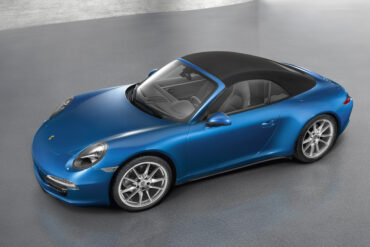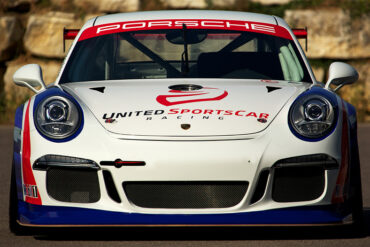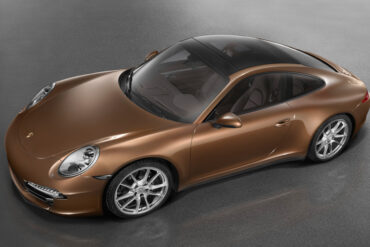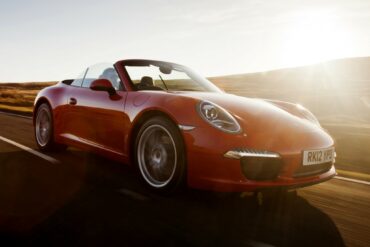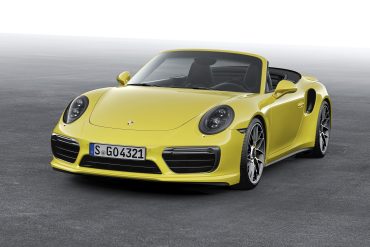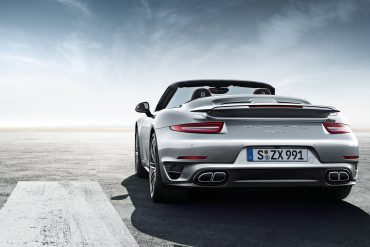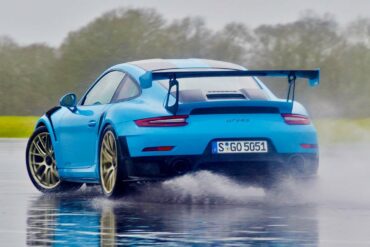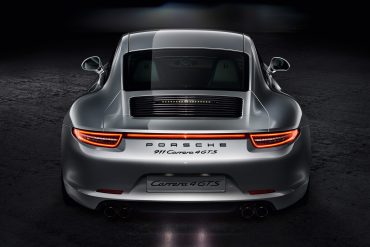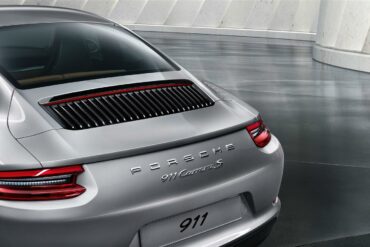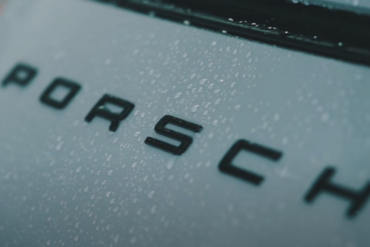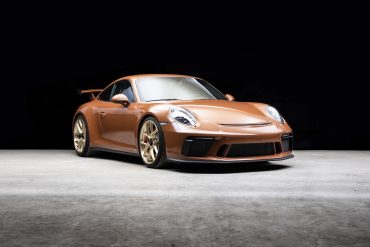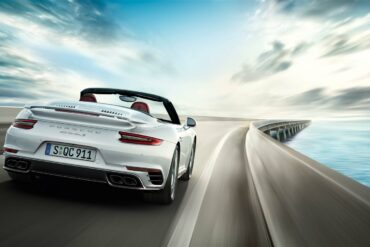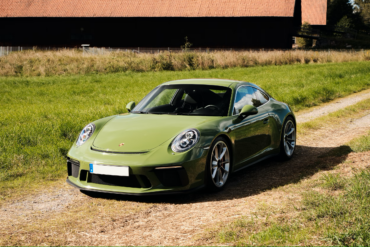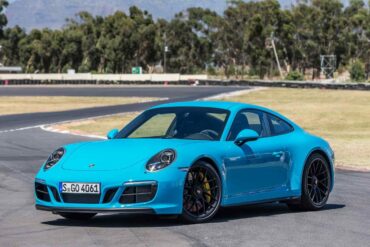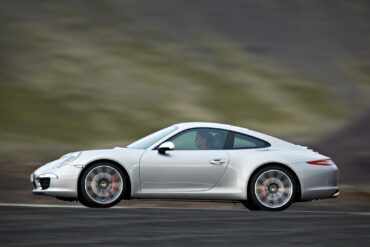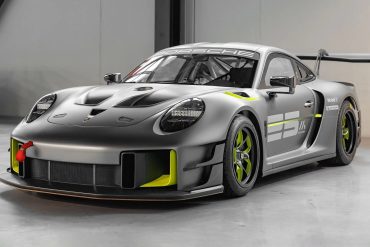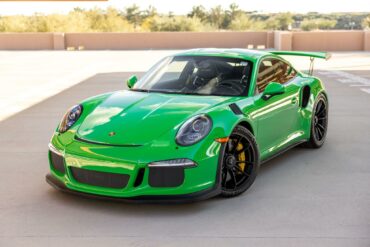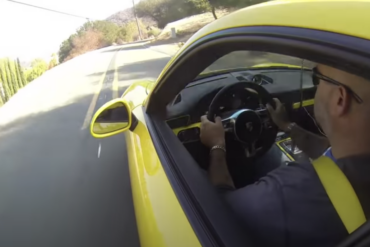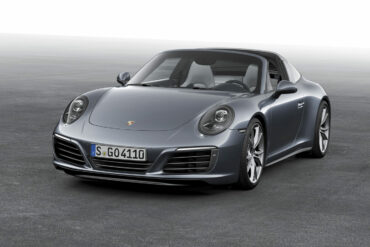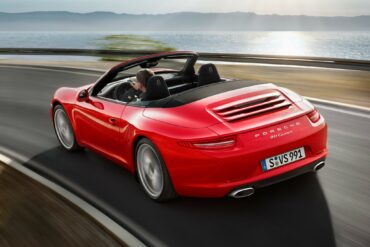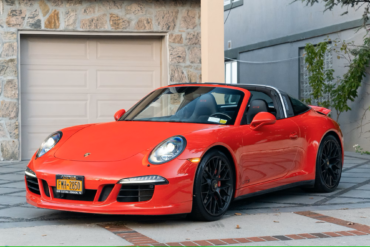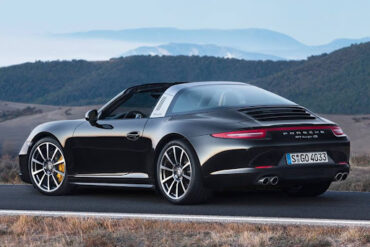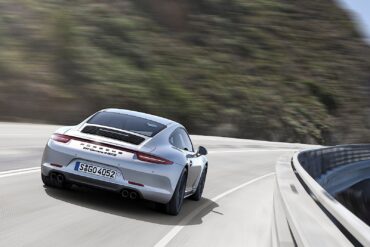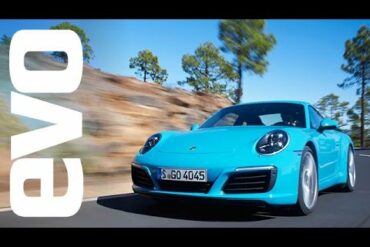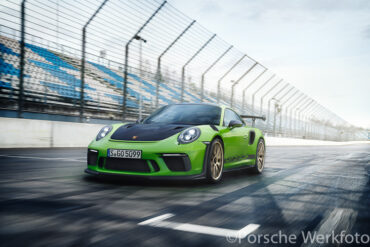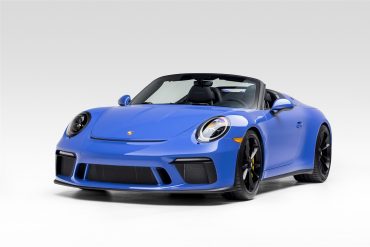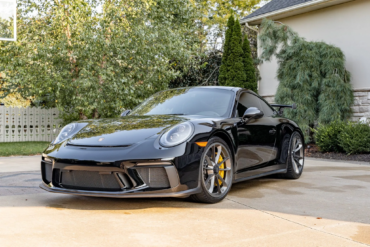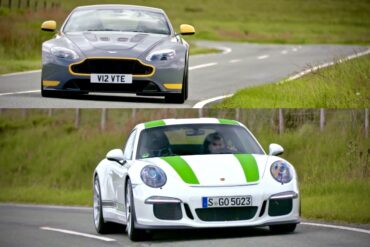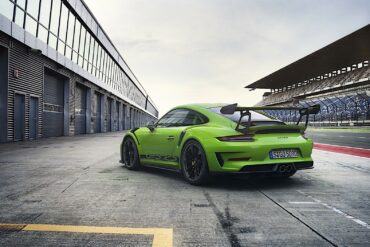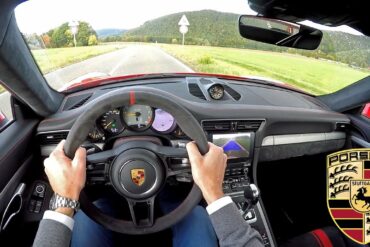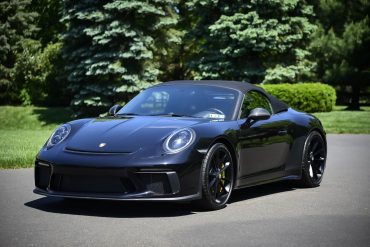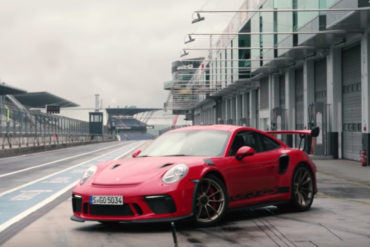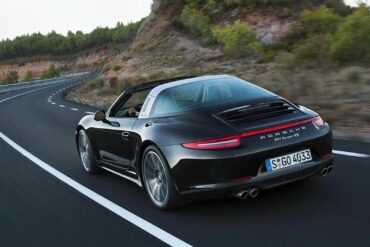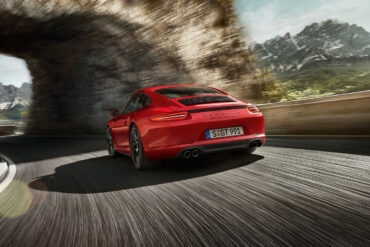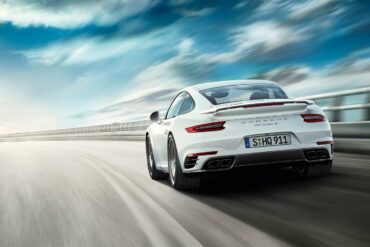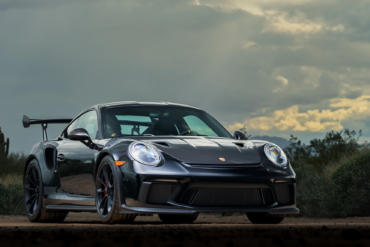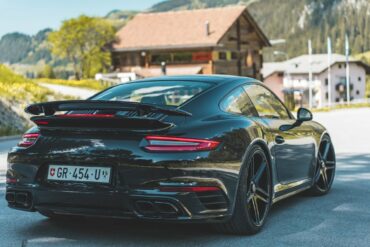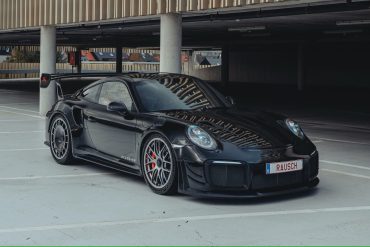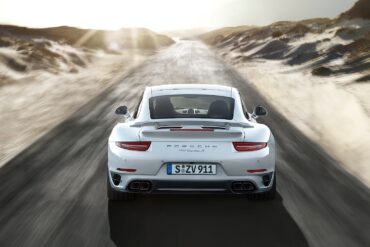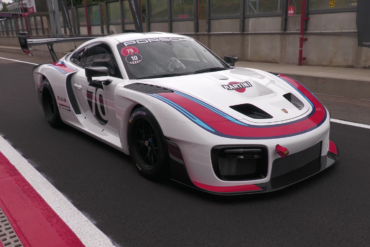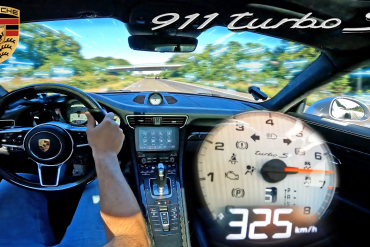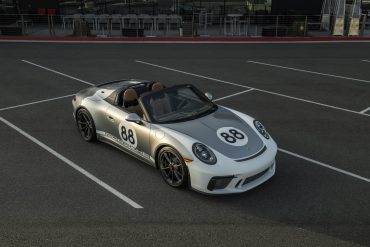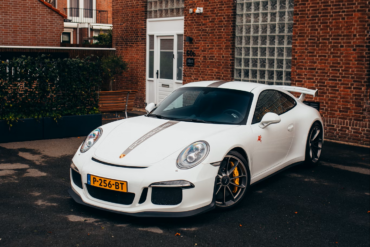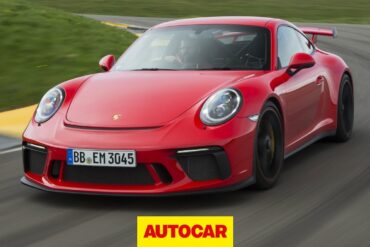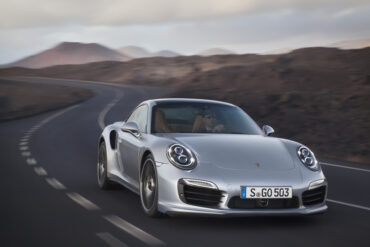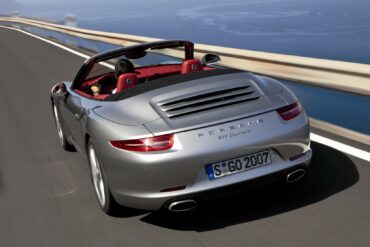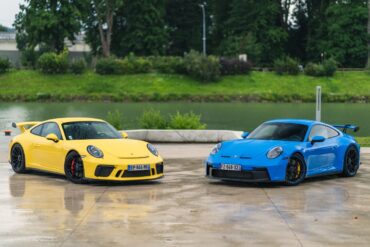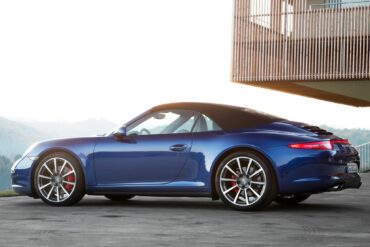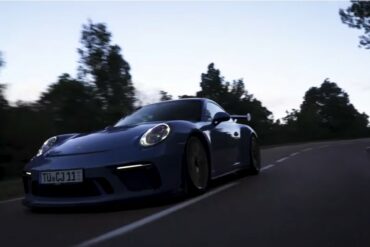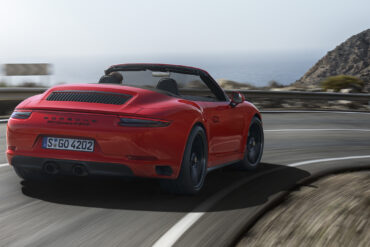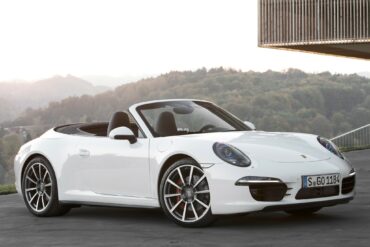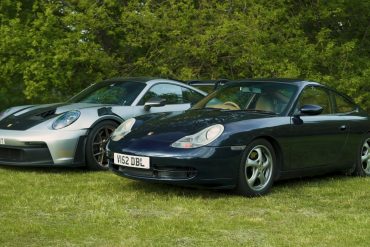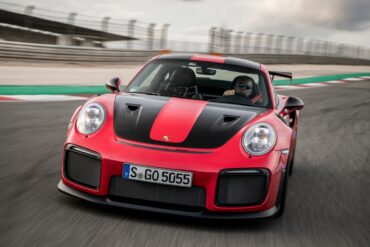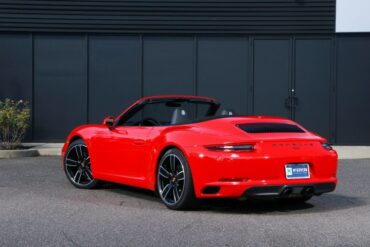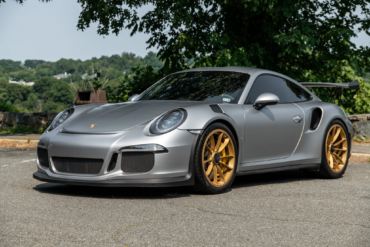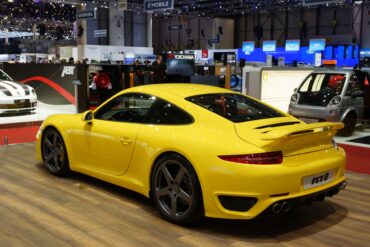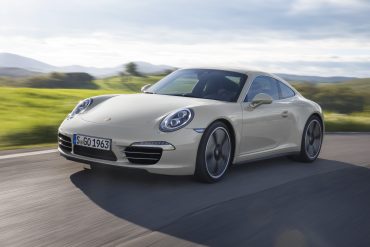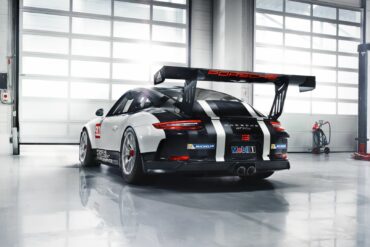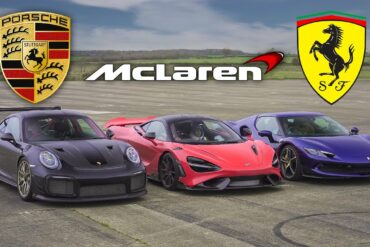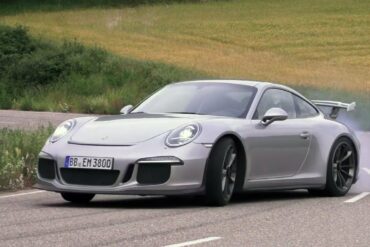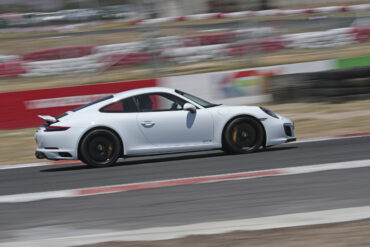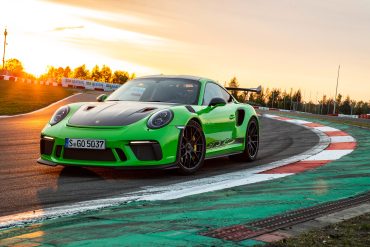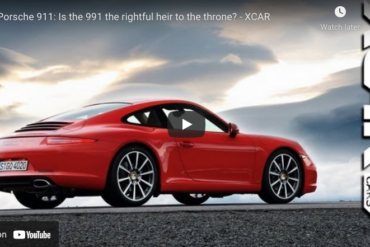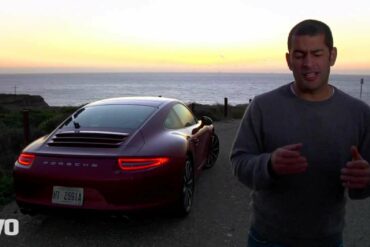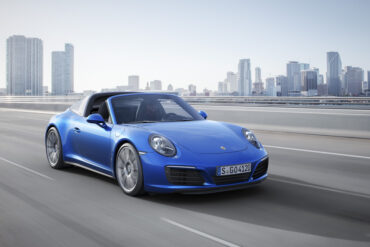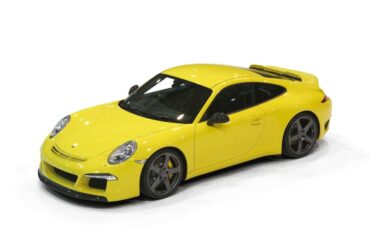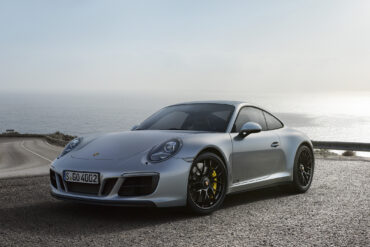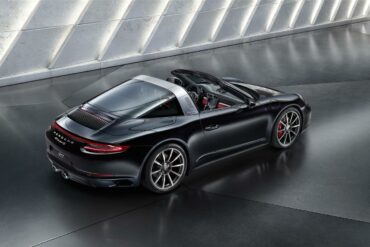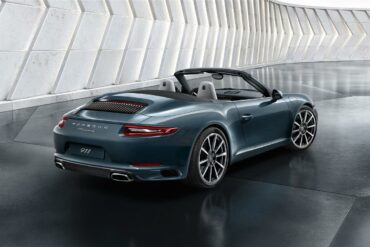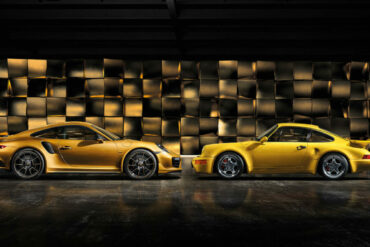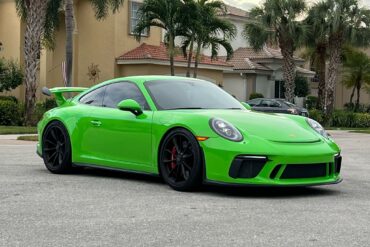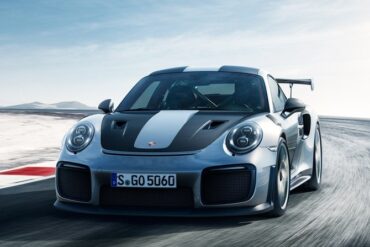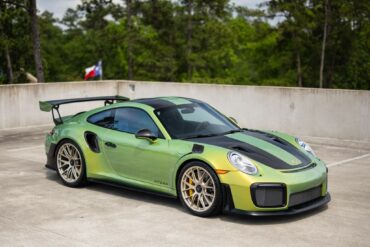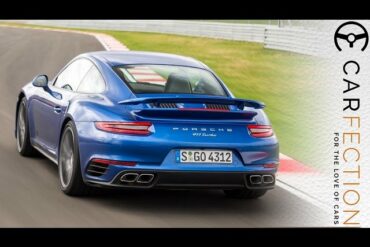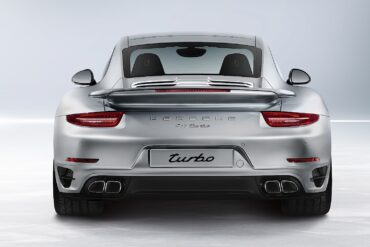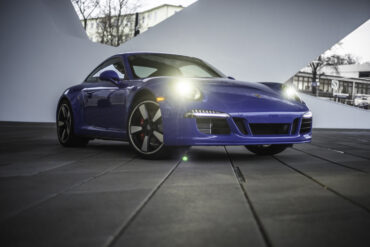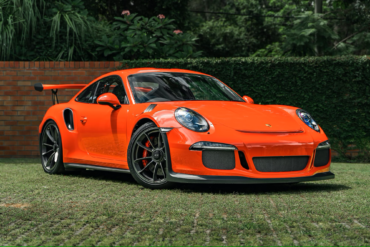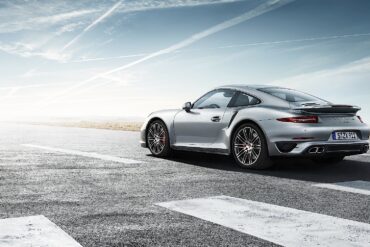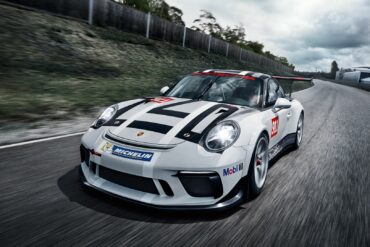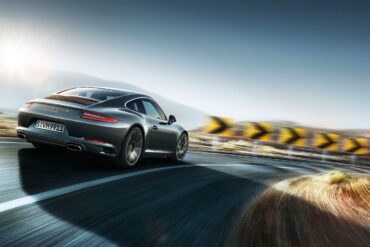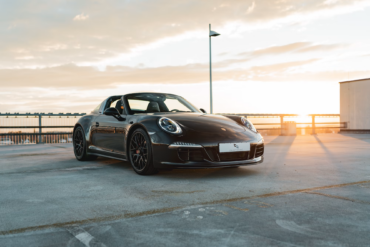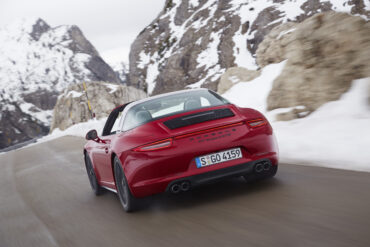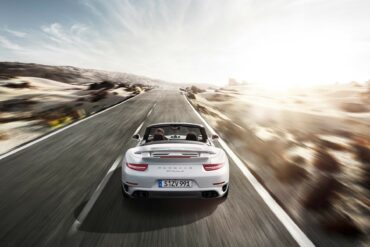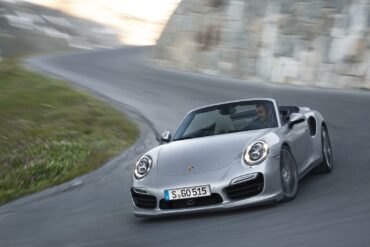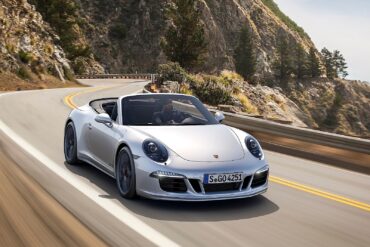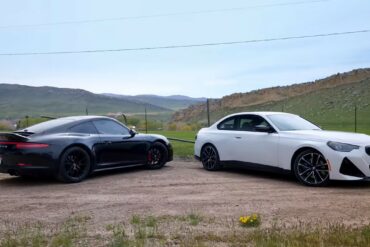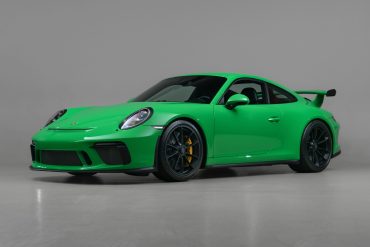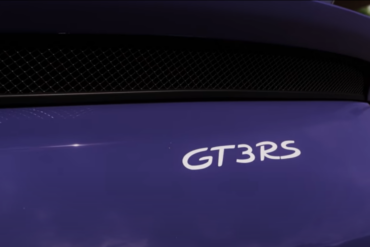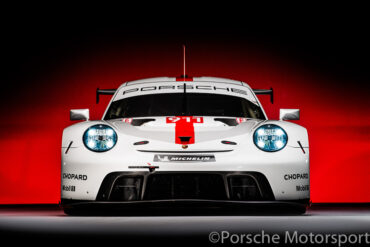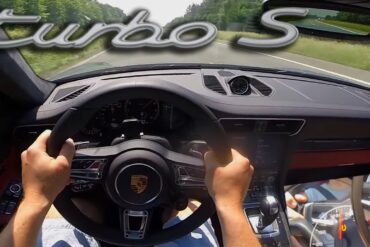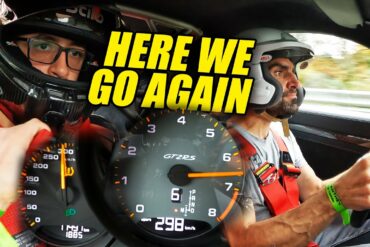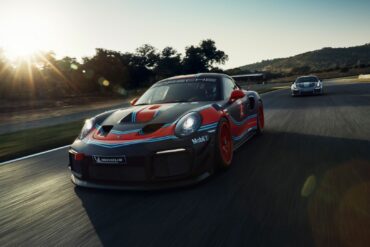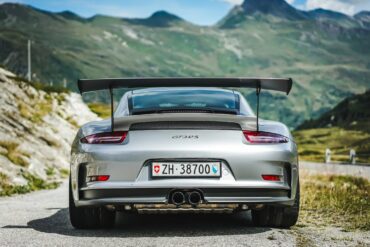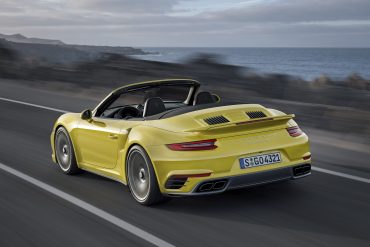2013 – 2015 Porsche 911 Carrera 4 Cabriolet Pictures & Gallery ...
2014 Porsche 911 GT America (991) Technical Specifications price $ $269,000 engine Flat-6 position Rear, Longitudinal aspiration Natural ignition Coil-On-Plug...
The 2013 Porsche Carrera 4 featured a 3.4-liter flat-six engine. It was mated as standard to a world's first seven-speed manual transmission. An automatic, PDK (dual-clutch) transmission was offered as an option. The Carrera 4 featured an all-wheel-drive torque distribution in the instrument cluster display. The most distinctive identifying feature of the 911 with all-wheel drive is still the wide rear section: compared to the two-wheel drive 911 Carrera models, the rear wheel housings 22 mm wider, and each of the rear tires is 10 mm wider.
2012 Porsche 911 Carrera Cabriolet (991) Technical Specifications Engine Type Flat 6 Induction Normally-aspirated Cooling Water-cooled Valvetrain Four overhead camshafts, four...
Salon Privé, Blenheim Palace, 1 September 2018: Concours Masters Celebration of 70 Years of Porsche I received the email inviting...
2019 Porsche 911 Turbo S Cabriolet (991.2) Technical Specifications Engine Engine layout Rear Engine Engine type Boxer, twin-turbo Cylinders 6 Valves...
2015 Porsche 911 Turbo Cabriolet (991) Technical Specifications Engine layout Rear Engine Engine type Twin Turbo Boxer w/ VTG Cylinders 6...
Porsche 991 GT3 RS on road and track Looks like a 911, drives like a hypercar? The Porsche 911 GT2...
2015 Porsche 911 Carrera 4 GTS (991) Technical Specifications Engine layout Rear Engine Engine type Boxer-6 Cylinders 6 Valves per...
2017 Porsche 911 Carrera S Coupe (991.2) Technical Specifications Engine Engine layout Rear Engine Engine type Boxer, twin-turbo Cylinders 6 Valves...
Porsche’s 911 GT3 of the 991.2 generation incorporated several improvements over its predecessor. Responding to the demands of its loyal...
2018 Porsche 911 Turbo S Cabriolet (991.2) Technical Specifications Engine Engine layout Rear Engine Engine type Boxer, twin-turbo Cylinders 6 Valves...
Porsche has unveiled the 991-generation 911 GT3 with Touring Package at the 67th International Motor Show in Frankfurt. The car...
2017 – 2019 Porsche 911 Carrera GTS (991.2) Pictures & Gallery...
2014 Porsche 911 Carrera S Coupe (991) Technical Specifications Engine Type Flat 6 Induction Normally-aspirated Cooling Water-cooled Valvetrain Four overhead camshafts,...
For all track enthusiasts out there, you might want to check out this year’s Monterey Car Week where a compelling...
The Porsche 991 GT3 RS is a track-focused variant that was unveiled at the 2015 Geneva Motor Show. It introduced...
TheSmokingTire Review of the 991 Porsche 911 Carrera S Matt takes a spirited drive through the canyons in the 2014...
2017 Porsche 911 Targa 4 (991.2) Technical Specifications Engine Engine layout Rear Engine Engine type Boxer, twin-turbo Cylinders 6 Valves per...
2015 Porsche 911 Carrera Cabriolet (991) Technical Specifications Engine Type Flat 6 Induction Normally-aspirated Cooling Water-cooled Valvetrain Four overhead camshafts, four...
When it was first introduced, many people were skeptical about the need for the Targa 4 GTS especially that it...
Tiff Needell & A Lovely Targa 4S Tiff Needell reviews the Porsche 911 4S Targa (991), and finds out how...
2015 – 2016 Porsche 911 Carrera 4 GTS (991) Pictures & Gallery ...
Does turbocharging dull the tone of its 3-litre flat-six? Henry Catchpole provides us with a first glimpse of the second-gen...
2018 Porsche 911 GT3 RS With a clear focus on motorsport, the Porsche Motorsport department will present its latest project...
The 2019 Porsche 911 Speedster is the beneficiary of Stuttgart’s latest fixings, while also serving as a throwback to the...
Acquired by the seller in March 2019, this 991.2-generation Porsche 911 GT3 features a host of desirable options like its...
Aston V12 Vantage S Vs Porsche 911 R The Porsche 911 R has 493bhp from a 4-litre naturally aspirated flat-six...
2018 Porsche 911 GT3 RS (991.2) Technical Specifications Engine Engine Type Aluminium horizontally opposed and naturally aspirated engine Displacement 3996 cm3...
Mountain Run in a 991.2 GT3 In this video I take you for a POV test drive behind the wheel...
2019 Porsche 991.2 Speedster Auction I could spend all day looking at cars being auctioned off at PCarMarket. Almost every...
2014 – 2015 Porsche 911 Targa 4S Pictures & Gallery ...
2015 – 2016 Porsche 911 Carrera GTS (991) Pictures & Gallery ...
2018 Porsche 911 Turbo S (991.2) Technical Specifications Engine Engine layout Rear Engine Engine type Boxer, twin-turbo Cylinders 6 Valves per...
991.2 GT2 RS – Most Powerful 911 Driven Porsche‘s Most Powerful 911 ever!! The Legendary GT2 RS! When a 911 Turbo...
Bring A Trailer is currently offering a low mileage and eye-catching example of Porsche’s 991.2 generation track-focused supercar that also...
Tuned 911 Turbo S On the Road I am a big fan of the Cars With Luke channel and in...
Introduced as the most powerful and high-performance production 911 variant ever built, the Porsche 991 GT2 RS boasts a twin-turbocharged...
2016 Porsche 911 Turbo S (991) Technical Specifications Engine layout Rear Engine Engine type Twin Turbo Boxer w/ VTG Cylinders 6...
The 2019 Porsche 935 is based on the popular 935/78 LM race car from the 1970s which was, given the name ‘Moby...
The Porsche 911 GT3 | Chris Harris Drives | Top Gear In this week’s instalment, Chris Harris tackles the mighty...
2012 RUF RT-35 Anniversary The Rt 35 Anniversary is based on the Porsche 991. Its Turbo power-train is offered only...
In a recent video shared by AutoTopNL on YouTube, we get to see a Porsche 991.2 Turbo S gets pushed...
The 2019 Porsche 911 Speedster is the beneficiary of Stuttgart’s latest fixings, while also serving as a throwback to the Porsche 356...
Porsche introduced the 991 GT3 for the 2014 model year, as follow up to the multiple 997 GT3 variants. The...
Hardcore new GT3 Tested by Autocar The Porsche 911 GT3 is back. The revised 991.2 GT3 is a stripped-out, track-ready,...
Porsche offered the 991 Turbo S from the start of the production of the 991 Turbo. The unique features of the Turbo S were the GT3 mirrors, slightly different front spoiler grilles and interior features. As before, the Turbo S was a heavily equipped version of the Turbo. The powerkit added 29 KW of power and the following equipment came as standard: PDCC hydraulic rollbar system, Sport Chrono (Launch control and 0.15 bar overboost functions), dynamic engine mounts, PCCB Porsche Ceramic Composite Brakes, central lock wheels, full LED dynamic headlights, 18-way Sport Plus seats with memory.
2012 – 2015 Porsche 911 Carrera Cabriolet Pictures & Gallery...
Porsche 911 GT3 Buyer’s Guide (991 & 992) Over the past 2 decades, the Porsche 911 GT3 models—and their variants,...
2013 Porsche 911 Carrera 4S Cabriolet (991) Technical Specifications Engine Type Flat 6 Induction Normally-aspirated Cooling Water-cooled Valvetrain Four overhead camshafts,...
A behind the scenes look of the filming of a Porsche GT3 MR, as they travel towards Corsica to fully...
2017 – 2019 Porsche 911 Carrera 4 GTS Cabriolet (991.2) Pictures & Gallery...
2015 Porsche 911 Carrera 4S Cabriolet (991) Technical Specifications Engine Type Flat 6 Induction Normally-aspirated Cooling Water-cooled Valvetrain Four overhead camshafts,...
The Porsche 911 is a legendary car, revered for its timeless design, exceptional performance, and exhilarating driving experience. It also...
The GT2 RS's reputation as the most powerful street-legal car is as monstrous as this comprehensive guide. Suffice to say, this supercar has been built with the best Porsche has to offer. It's not bragging, it's just facts. There is no doubt that the new GT2 RS is the pinnacle of the 911 in terms of performance. It is simply the fastest 911 in history, and that’s a fact. It is the quickest production car to lap the Nürburgring Nordschleife. It is the most powerful 911 ever made.
2017 Porsche 911 Carrera 4 Cabriolet (991.2) Technical Specifications Engine layout Rear Engine Engine type Boxer, twin-turbo Cylinders 6 Valves per...
Porsche’s now famous RS moniker that was introduced in 2015, once again blurs the boundary between road-going sports cars and...
2012 RUF RGT-8 The RGT 8, first introduced here at Geneva in 2010, is now available based on the new...
2014 Porsche 911 50th Anniversary Edition Pictures & Gallery ...
(2016-2020) Porsche 911 GT3 Cup (991.2) Technical Specifications Concept Single-seater production-based race car Base model: 911 GT3 Engine Aluminium six-cylinder...
The Porsche 911 GT2 RS is an extremely powerful car with 700 hp, making it one of the quickest Porsches...
Chris Harris Spanks the New 991 GT3 If we were a car magazine we’d call this a WORLD EXCLUSIVE, but...
2017 Porsche 911 Carrera 4 GTS (991.2) Technical Specifications Engine Engine layout Rear Engine Engine type Boxer, twin-turbo Cylinders 6 Valves...
When automotive enthusiasts are asked to describe the pinnacle of the Porsche 911, the 991.2 GT3 RS overwhelmingly dominates the...
Porsche is the most successful marque in the 24 Hours of Le Mans and British drivers have played an important role in delivering these historical achievements, and in celebration of this success a special limited edition model – the 911 Carrera 4 GTS British Legends Edition was created. Designed by the drivers who took wins in the 24 Hours of Le Mans for the factory team – Richard Attwood (winner 1970), Derek Bell MBE (winner 1981, 1982, 1986, 1987) and Nick Tandy (winner 2015) – this model was developed by Porsche Cars GB and Porsche Exclusive Manufaktur.
Carfection Reviews the New 991.2 Carrera S A new 911 is always something to pay special attention to. It’s the...
Chris Harris Review of the 991 Porsche 911 Chris Harris gets a first look at the new 911 in California....
The 991.2 911 Targa 4S is powered by the latest water-cooled 3.0-liter twin-turbocharged flat-six from Porsche, producing 420 hp and 368 lb-ft of torque. It can be optioned with a PDK seven-speed dual-clutch automatic (a seven-speed manual is standard) and all-wheel drive is standard. Whereas the two earlier generations of Targas were little more than 911 Carreras with large glass sunroofs, the 991-series Targa nailed the look and feel of the original.
2014 RUF RCT RUF’s turbocharged cars have a proven track record, sustained over 37 years at the cutting edge of...
2017 – 2019 Porsche 911 Carrera 4 GTS (991.2) Pictures & Gallery...
2016 Porsche 911 Targa 4S (991.2) Technical Specifications Engine Engine layout Rear Engine Engine type Boxer, twin-turbo Cylinders 6 Valves per...
2016 – 2019 Porsche 911 Carrera Cabriolet (991.2) Pictures & Gallery...
2019 Porsche 911 Turbo S Exclusive (991.2) Technical Specifications Engine Engine layout Rear Engine Engine type Boxer, twin-turbo Cylinders 6 Valves...
This 991.2-generation Porsche 911 GT3 available for auction on PCarMarket possesses a number of desirable features, chief amongst is its...
New 2018 911 GT2 RS with 700 hp, rear-wheel drive, race-bred chassis, and rear axle steering Atlanta, Georgia. The fastest and...
Live now on PCARMARKET is a 2019 Porsche 911 GT2 RS with a stunning one-of-a-kind Python Green Chromaflair exterior finish...
Carfection Reviews the 911 Turbo S (991.2) The new 911 Turbo S is a very, very fast car. Its predecessor...
2015 Porsche 911 Turbo (991) Technical Specifications Engine layout Rear Engine Engine type Twin Turbo Boxer w/ VTG Cylinders 6 Valves...
To celebrate 60 years of Porsche Club of America, PCNA (Porsche Cars North America) ordered 60 units of 911 Carrera GTS Coupés in Club Blue from Porsche Exclusive. All 60 cars were equipped with SportDesign aerokit (including ducktail). These Club cars were not numbered because it wasn't a special series by Porsche AG, but a series of similarly equipped cars ordered by PCNA. The cars got a few unique touches by Porsche Exclusive, like the special "Club Blau" paint, the "Club Coupe" stickers on the doors, the door entry guards with ''GTS Club Coupe" lettering and number "60" embossed on the armrest cover.
Don’t miss your chance to own a low mileage and almost-new example of a 2016 Porsche 911 (991.1) GT3 RS...
Porsche 911 Turbo & Turbo S (991.1) Technical Specs & Performance Here year is year of introduction, not model year....
The rear of the world’s most-produced GT racing car now houses a 4-litre, six-cylinder flat engine for even more drive. Thanks to thoroughbred motorsport technology, the compact engine with direct fuel injection delivers peak performance of 357 kW (485 hp). A range of innovative details also improve efficiency in addition to engine performance, ensuring even better durability of the naturally aspirated engine in racing mode and reduced maintenance costs.
2016 – 2019 Porsche 911 Carrera (991.2) Pictures & Gallery...
Sporty, stylish, and a super-fast all-weather grand tourer is how would you like to best describe this 2015 Porsche 911...
2018 Porsche 911 Targa 4 GTS (991.2) Technical Specifications Engine Engine layout Rear Engine Engine type Boxer, twin-turbo Cylinders 6 Valves...
2016 Porsche 911 Turbo S Cabriolet (991) Technical Specifications Engine layout Rear Engine Engine type Twin Turbo Boxer w/ VTG Cylinders...
The 2014 Porsche 911 Turbo Cabriolet is a great companion to its coupe sibling. The Porsche 911 Turbo Cabriolet delivers the same blend of dynamism, performance and efficiency offered by the Coupe. The turbocharged 3.8-litre six-cylinder engine delivers 520 bhp and it helps drivers accelerate from zero to 60 mph in just 3.1 seconds (there goes your hair style). Compared to the 997.2 Turbo Cabriolet the new Turbo Cab delivers 30 bhp more power and are 0.2 seconds faster in terms of their standard acceleration. It is also up to 15% more efficient and more luxurious and comfortable to boot.
Real Rivals. Which Is Better? We test the brand new 2015 Audi R8 V10 Plus against the 991 Porsche 911...
So what else do you get when you buy a 991 Carrera 4 GTS Cabriolet? First of all you get a 30 hp bump over the Carrera 4S to 430 hp from the 3.8L naturally aspirated flat-six. You get forged centre-lock black 20-inch wheels, dynamic engine mounts, the Sports Chrono Package, PASM adaptive damping with a lowered ride height, an interior swathed in Alcantara, a sinister front fascia with black intakes and custom rear apron with black tailpipes that broadcast the goods through an uber-nasty sport exhaust system. Other trim details include black lettering and smoked headlights.
Everyday Driver compares and contrasts the Porsche 911 Carrera 4S and the BMW M240i. Guess which car comes out on...
The 991.2 generation of Porsche’s 911 GT3 marked a significant improvement over its predecessor, incorporating several desirable changes. Responding to...
991.1 Porsche 911 GT3 RS Review Evo’s Henry Catchpole delivers his first impressions on the incredible new 991.1 Porsche 911...
The new Porsche 911 RSR (2019) What better way to introduce a new race car model, than to do so...
Porsche 911 Turbo S 991 MK2 AUTOBAHN POV Porsche 911 Turbo S 991 MK2 AUTOBAHN POV 295km/h by AutoTopNL...
The Porsche GT2 RS MR is a car that currently holds the limited production car record at the Nordschleife, at...
This car was officially called as the 911 GT2 RS Clubsport, but the name is rather misleading. The car was not built for the GT2 racing class which is long extinct and club sport has stood for Porsche club track days while this non-streel-legal car is a real racing car. Finally, the car was based on the 991 GT2 RS, which already had the Clubsport version. So, in order to understand what is what, we call it "991 GT2 RS Clubsport racing version". The 991 GT2 RS engine with 515 kW was powerful enough, so it was not tuned.
The Key to Happiness – A 991.1 GT3 RS If you own a Porsche 991 GT3 RS, there must be...
2017 Porsche 911 Turbo S Cabriolet (991.2) Technical Specifications Engine Engine layout Rear Engine Engine type Boxer, twin-turbo Cylinders 6 Valves...


